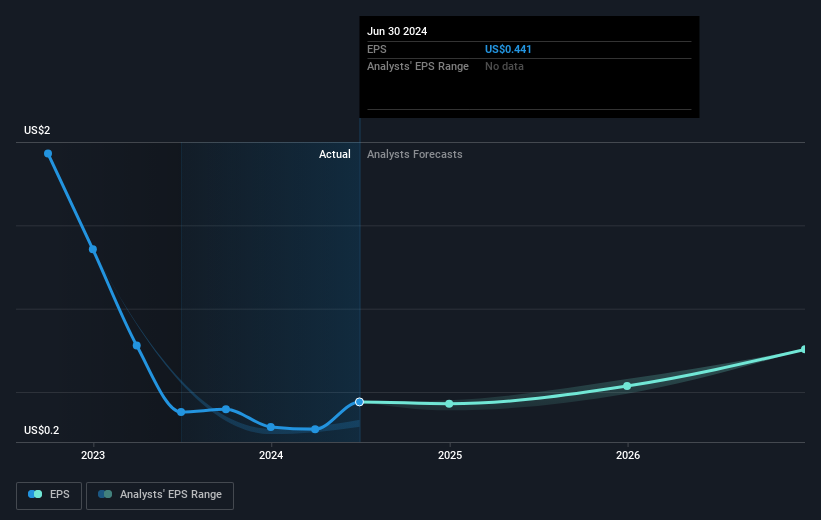- United States
- /
- Semiconductors
- /
- NasdaqGS:HIMX
Himax Technologies' (NASDAQ:HIMX) five-year earnings growth trails the splendid shareholder returns

It hasn't been the best quarter for Himax Technologies, Inc. (NASDAQ:HIMX) shareholders, since the share price has fallen 27% in that time. But that doesn't change the fact that the returns over the last five years have been very strong. We think most investors would be happy with the 152% return, over that period. To some, the recent pullback wouldn't be surprising after such a fast rise. Only time will tell if there is still too much optimism currently reflected in the share price. While the returns over the last 5 years have been good, we do feel sorry for those shareholders who haven't held shares that long, because the share price is down 43% in the last three years.
Since the stock has added US$66m to its market cap in the past week alone, let's see if underlying performance has been driving long-term returns.
View our latest analysis for Himax Technologies
While markets are a powerful pricing mechanism, share prices reflect investor sentiment, not just underlying business performance. One imperfect but simple way to consider how the market perception of a company has shifted is to compare the change in the earnings per share (EPS) with the share price movement.
Over half a decade, Himax Technologies managed to grow its earnings per share at 110% a year. The EPS growth is more impressive than the yearly share price gain of 20% over the same period. Therefore, it seems the market has become relatively pessimistic about the company.
The image below shows how EPS has tracked over time (if you click on the image you can see greater detail).

We know that Himax Technologies has improved its bottom line lately, but is it going to grow revenue? You could check out this free report showing analyst revenue forecasts.
What About Dividends?
When looking at investment returns, it is important to consider the difference between total shareholder return (TSR) and share price return. The TSR incorporates the value of any spin-offs or discounted capital raisings, along with any dividends, based on the assumption that the dividends are reinvested. It's fair to say that the TSR gives a more complete picture for stocks that pay a dividend. We note that for Himax Technologies the TSR over the last 5 years was 230%, which is better than the share price return mentioned above. This is largely a result of its dividend payments!
A Different Perspective
Himax Technologies shareholders are up 6.6% for the year (even including dividends). But that was short of the market average. On the bright side, the longer term returns (running at about 27% a year, over half a decade) look better. It's quite possible the business continues to execute with prowess, even as the share price gains are slowing. It's always interesting to track share price performance over the longer term. But to understand Himax Technologies better, we need to consider many other factors. Case in point: We've spotted 1 warning sign for Himax Technologies you should be aware of.
If you would prefer to check out another company -- one with potentially superior financials -- then do not miss this free list of companies that have proven they can grow earnings.
Please note, the market returns quoted in this article reflect the market weighted average returns of stocks that currently trade on American exchanges.
Valuation is complex, but we're here to simplify it.
Discover if Himax Technologies might be undervalued or overvalued with our detailed analysis, featuring fair value estimates, potential risks, dividends, insider trades, and its financial condition.
Access Free AnalysisHave feedback on this article? Concerned about the content? Get in touch with us directly. Alternatively, email editorial-team (at) simplywallst.com.
This article by Simply Wall St is general in nature. We provide commentary based on historical data and analyst forecasts only using an unbiased methodology and our articles are not intended to be financial advice. It does not constitute a recommendation to buy or sell any stock, and does not take account of your objectives, or your financial situation. We aim to bring you long-term focused analysis driven by fundamental data. Note that our analysis may not factor in the latest price-sensitive company announcements or qualitative material. Simply Wall St has no position in any stocks mentioned.
About NasdaqGS:HIMX
Himax Technologies
A fabless semiconductor company, provides display imaging processing technologies in China, Taiwan, the Philippines, Korea, Japan, Europe, and the United States.
Solid track record with excellent balance sheet and pays a dividend.


